If you click on a link and make a purchase we may receive a small commission. Read our editorial policy.
Dark Crisis: Young Justice’s return Is more self-aware than it appears
The Dark Crisis on Infinite Earths tie-in miniseries focusing on Young Justice comes to an end. Here’s how it speaks to the crossover and the wider DC fandom at large.
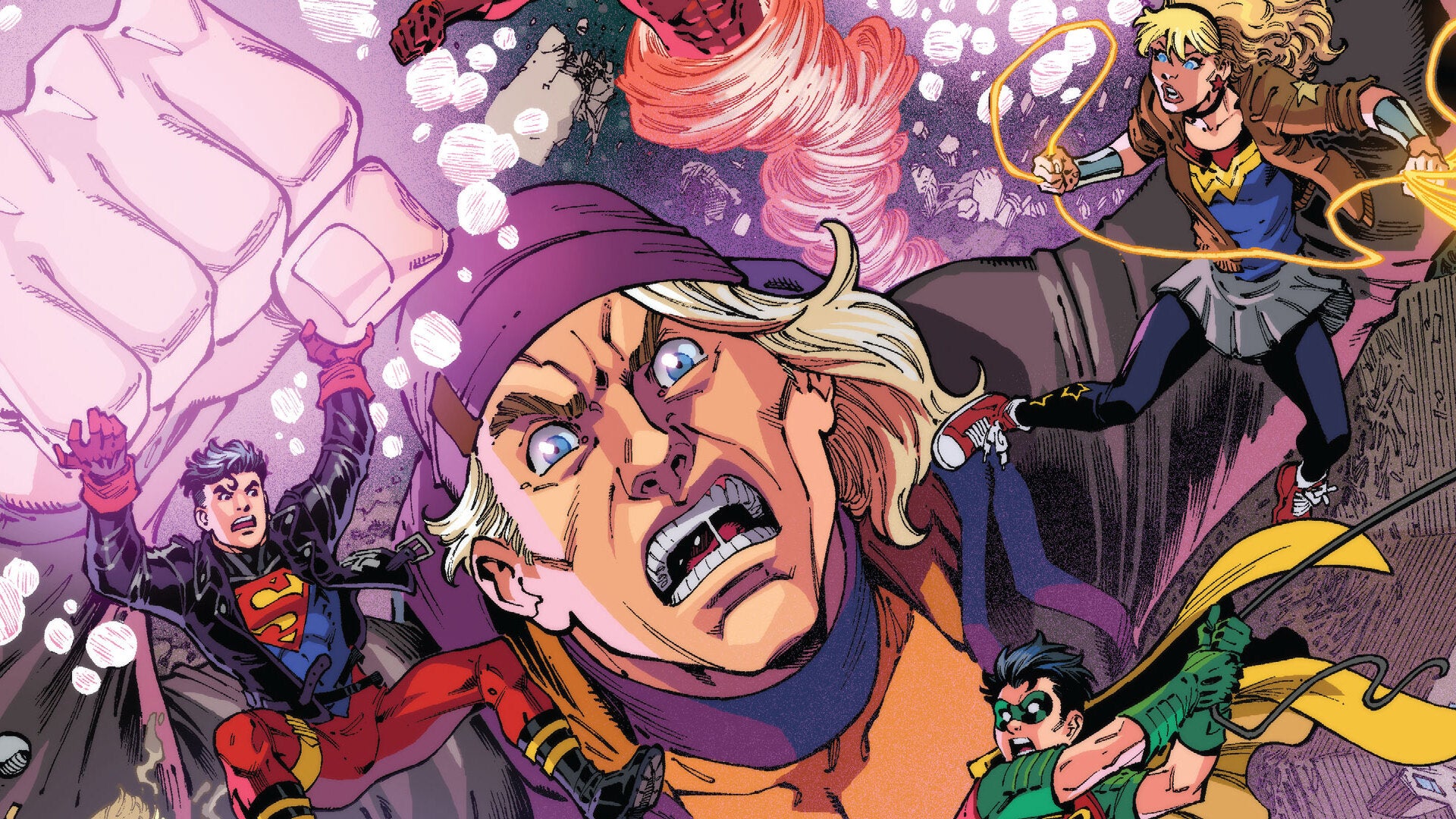
With Dark Crisis on Infinite Earths threatening the entire DC Multiverse, it’s all hands on deck for DC's remaining heroes to step up and make their last stand against the Dark Army at the main DC Universe’s Hall of Justice. The main crossover event by Joshua Williamson and Daniel Sampere has the young and old generations of heroes come together, with Nightwing and Jon Kent's Superman among those leading the charge. While the Titans take point, Young Justice has had their own concurrent set of adventures chronicled in the six-issue miniseries Dark Crisis: Young Justice.
Written by Meghan Fitzmartin with art from Laura Braga, the miniseries follows Cassie Sandsmark, the Wonder Girl before Yara Flor, as she finds herself whisked away while Dark Crisis sweeps across the DCU. However, rather than fighting against Pariah, Deathstroke, or the Dark Army, Wonder Girl finds herself in a very different kind of conflict, with reality-bending stakes and metatextual implications as she takes on Mickey Mxyzptlk, the young son of the classic Superman villain and Fifth Dimensional imp Mister Mxyzptlk.
Here is how Young Justice’s encounter with Mxyzptlk ties in with the wider Dark Crisis crossover event, what the miniseries reveals about this new reality-bending imp, and how Dark Crisis: Young Justice both calls out toxic fandom and underscores Dark Crisis’ deeper themes.
The Dark Crisis Fake-Out
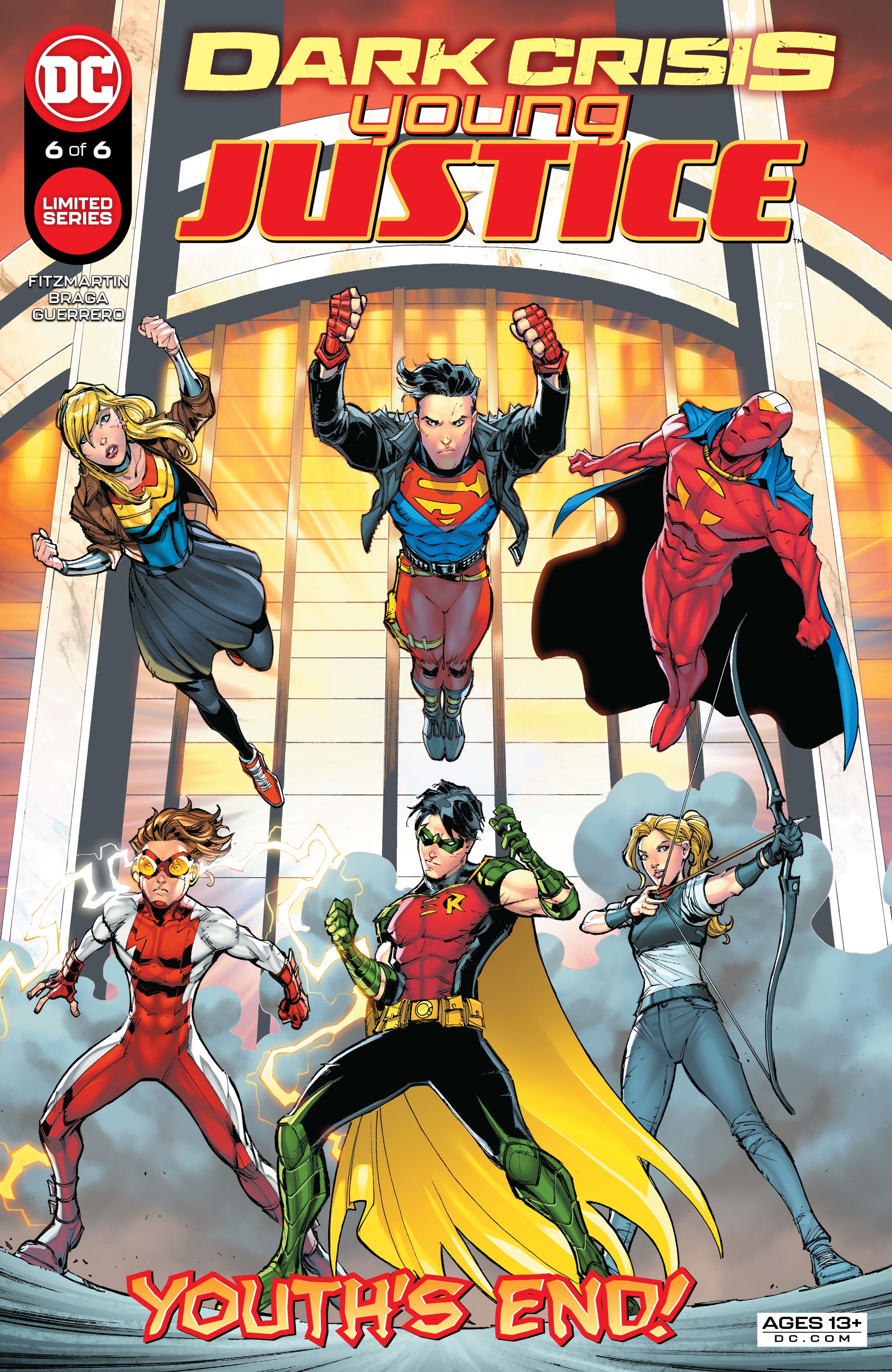
The Young Justice miniseries begins with the opening scene of Dark Crisis, as Nightwing leads a candlelight vigil for the Justice League in front of the Hall of Justice, assuming that the superhero team were wiped out by the Dark Army in deep space. Cassie notices that several of her Young Justice teammates, specifically Tim Drake, Connor Kent, and Bart Allen have all mysteriously disappeared at the funeral ceremony. Picking up their trail, Cassie discovers that her three longtime friends have been drawn away to a facsimile of the DCU in the ‘90s when the young heroes first convened to form the initial iteration of Young Justice. However, this blast from the past is not all as it appears, as Cassie discovers this world is more of a prison than a paradise.
There are several different forms of subterfuge intentionally going on with this premise for the miniseries. In-universe, the heroes are trapped in a world that appears like a subconscious fantasy come true as Robin, Superboy, and Impulse get to relive their glory days before they experienced the true hardships of heroism firsthand. This is a time before both Conner and Bart were killed in the line of duty and before Young Justice was overshadowed by the resurgence of the Titans. Of course, this is all an elaborate ruse for the throwback team to unwittingly become the plaything of someone far more sinister than they had imagined.
The other bit of misdirection is right there in the miniseries’ title. Given the tie-in status and its opening sequence, readers are led to believe that Pariah may be responsible for Young Justice being trapped in a pocket dimension of their own design. The Worlds Without a Justice League Dark Crisis tie-in specials feature a similar premise as each of the heroes are trapped in their own individual worlds, living out a vision of the DCU that speaks to their respective subconsciousness. Though it is implied that Pariah subjected Young Justice to something similar, this constructed reality is actually overseen by someone completely different and considerably more mischievous.
A New Fifth Dimensional Imp
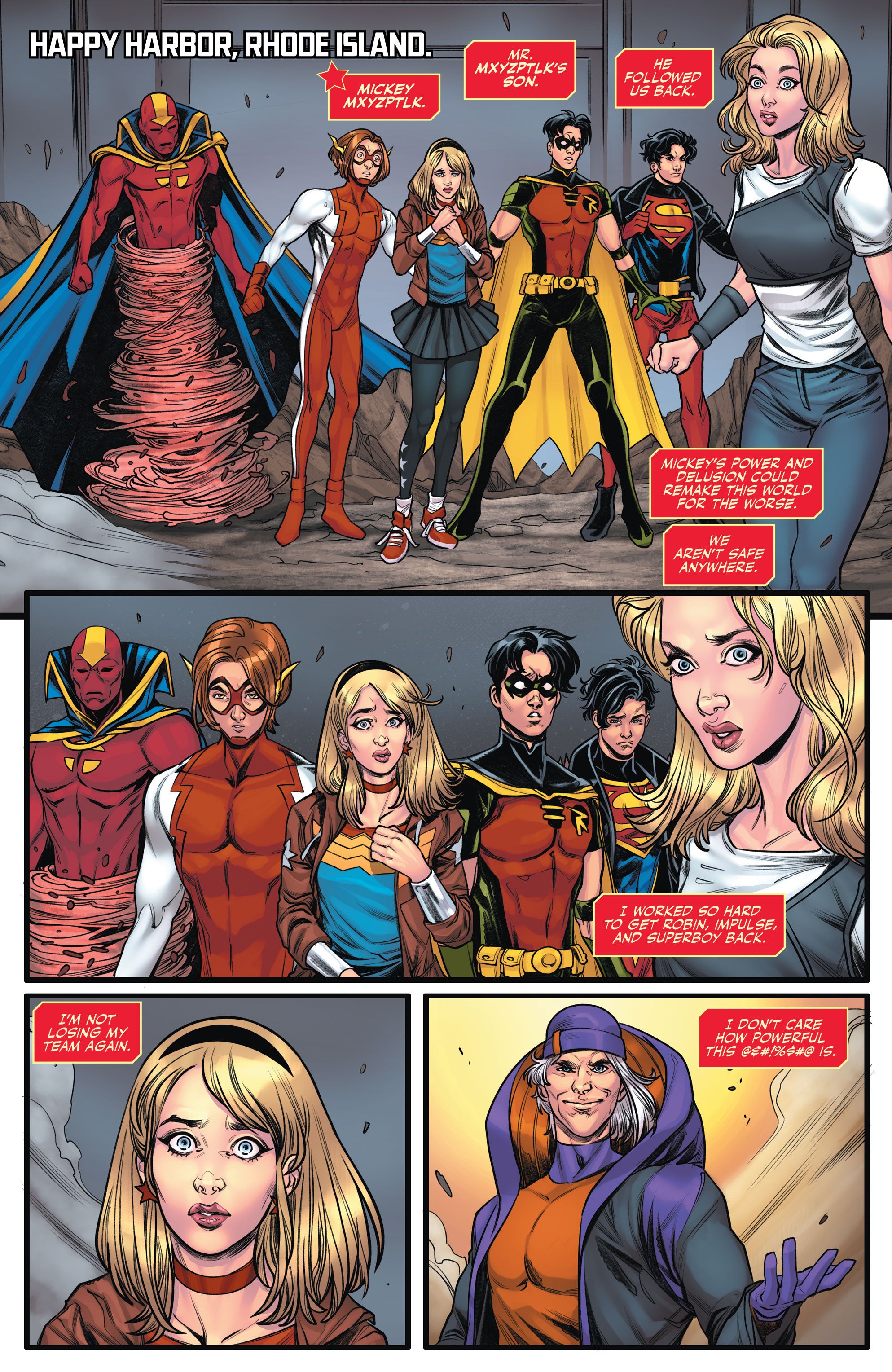
The entity responsible for kidnapping the classic Young Justice lineup in an attempt to recreate their early years is Mickey Mxyptlk, who possesses all the omnipotent powers of his father. Feeling he doesn’t recognize what Young Justice and its members have become, Mickey takes advantage of the chaos caused by Dark Crisis to seize the young heroes and put them in a dimension of his design and bring back Young Justice to how he remembers and appreciates it the most.
Cassie is able to maintain her sense of self-awareness and sets out to bring her friends back to their senses, outsmart Mickey, and escape back to the main DCU.
A Meditation on Toxic Fandom
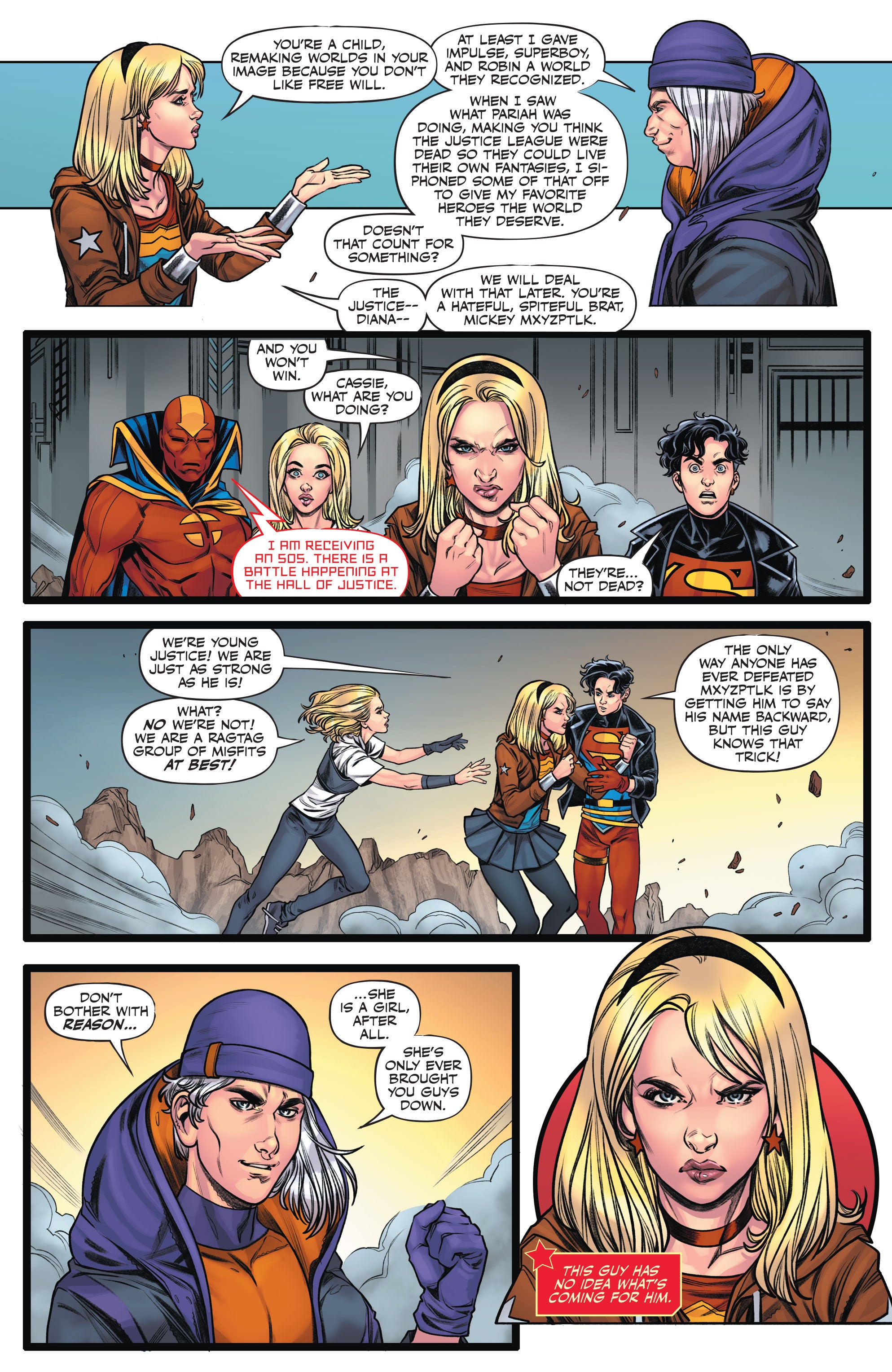
Beings from the Fifth Dimension have been seeing a resurgence across the DCU as of late, beyond the introduction of Mxyptlk’s son. In the non-canonical DCeased line, showcasing a horror-driven vision of the DCU overrun by zombies, Mxyptlk instigates a conflict between the surviving heroes and the Guardians of the Universe in the miniseries DCeased: War of the Undead Gods. In the pages of Nightwing, Dick Grayson gains his own Fifth Dimension admirer in Nite-Mite, an imp who idolizes Nightwing and attempts to reshape reality around Dick to distill the elements of the character that he likes the most.
This parallel is a knowing wink at toxically entitled fandom, and it's echoed and elaborated on in Dark Crisis: Young Justice. Mickey Mxyptlk is so intent on keeping Young Justice as he prefers them, that he will make living prisoners of the characters. As individuals, the heroes of Young Justice want to be allowed to grow and evolve, but Mickey shoots this down. Even more disturbing than this stagnant vision of the DCU is that Mickey’s reality means no new characters like Jon Kent or Damian Wayne are introduced, further inhibiting any sense of broader development of the team, in exchange for reliving the same tired stories over and over again. (Does this all sound familiar?)
This trait of trying to control the 'story' as a sort of 'fan' within Fifth Dimensional beings has largely been around since their introduction, with Bat-Mite created as an omnipotent admirer of Batman who wanted to live out his dream of teaming up with the Caped Crusader, no matter the reality-bending consequences. Both Mickey Mxyzptlk and the newly created Nite-Mite double down on this distinction albeit in different ways; Nite-Mite is as playful as Bat-Mite whereas Mickey is much more dangerously antagonistic; not quite to the same toxic fanboy levels as fourth wall-breaking villain Superboy-Prime, though the similarities are noticeable, dosed with casual misogyny towards Wonder Girl.
Young Justice in Dark Crisis
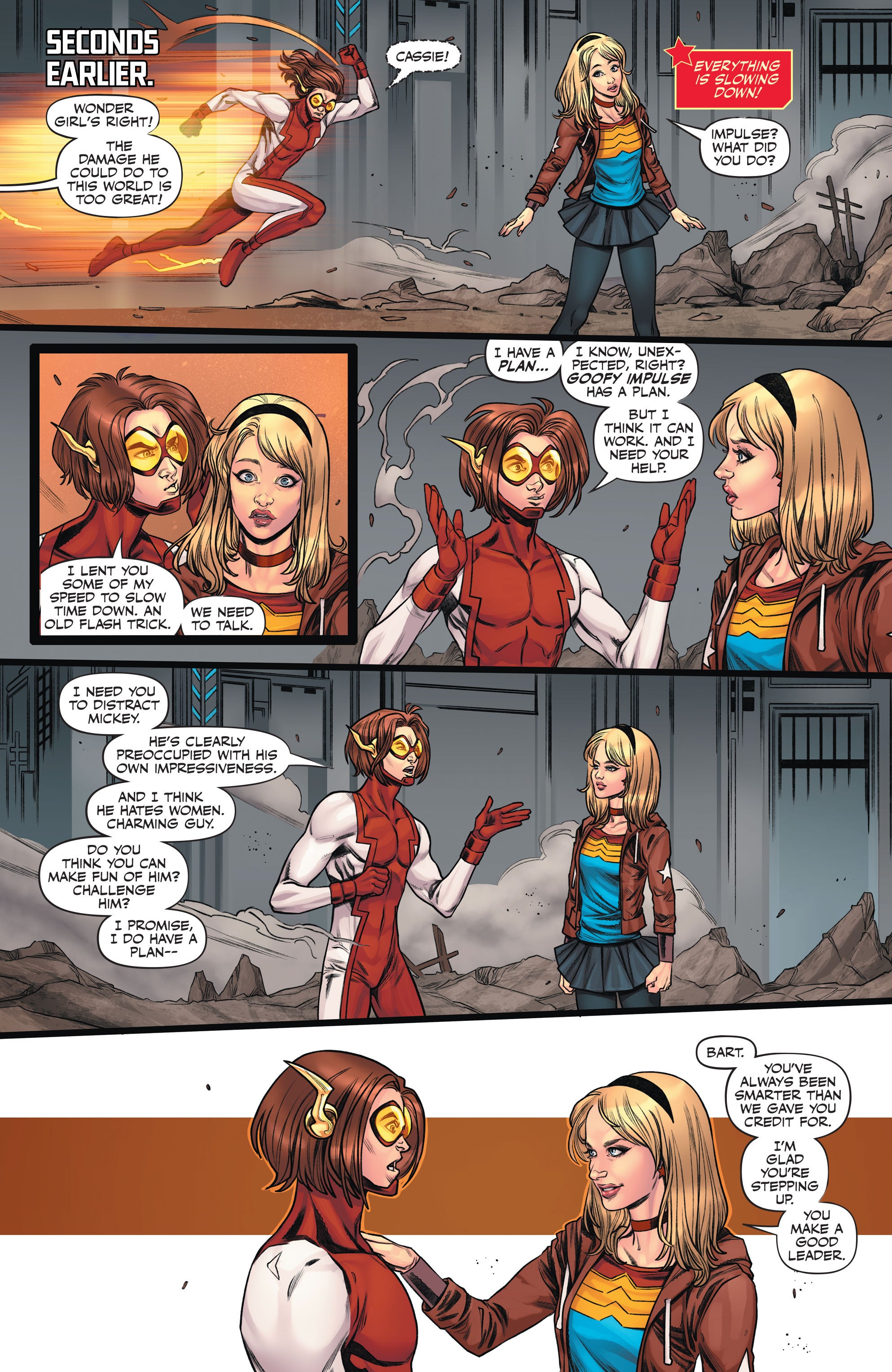
Ultimately, with the assistance of Red Tornado and Arrowette, Young Justice is able to join forces and outmaneuver Mickey, trapping him in an extra-dimensional prison in the form of a recursive loop – literally placing the 'toxic fan' into an 'echo chamber.' Stronger together, Young Justice overcomes the worst elements of its own 'fandom' to continue to grow into their true selves rather than being stuck in the past. As the dust settles and they are returned to the DCU, the team arrives just in time to provide vital back-up to the rest of the heroes defending the Hall of Justice from the Dark Army in Dark Crisis’ final battle.
While it may only be a matter of time before Mickey Mxyzptlk escapes from his prison and seeks revenge on Young Justice, the team has reminded readers why they’re so effective together in the first place and why it was necessary for them to experience the growing pains to emerge to where they are now. Back in the spotlight, Cassie Sandsmark makes a fan-favorite return to prominence as Wonder Girl that hopefully won’t abate any time soon as the young heroes take point. With Dark Crisis revolving around different generations of the DCU coming together, Young Justice has lived up to that expectation while taking point to quell their own reality-shaking crisis by themselves, always ready to save the day-- even if the adults are distracted.
Written by Meghan Fitzmartin, illustrated by Laura Braga, colored by Luis Guerrero, and lettered by Pat Brousseau, Dark Crisis: Young Justice #6 is on sale now. The hardcover collection, compiling the complete six-issue miniseries, is slated to go on sale June 13.
James Tynion IV heads to Dark Horse Comics with new imprint
Follow Popverse for upcoming event coverage and news
Find out how we conduct our review by reading our review policy
Let Popverse be your tour guide through the wilderness of pop culture
Sign in and let us help you find your new favorite thing.
















Comments
Want to join the discussion? Please activate your account first.
Visit Reedpop ID if you need to resend the confirmation email.